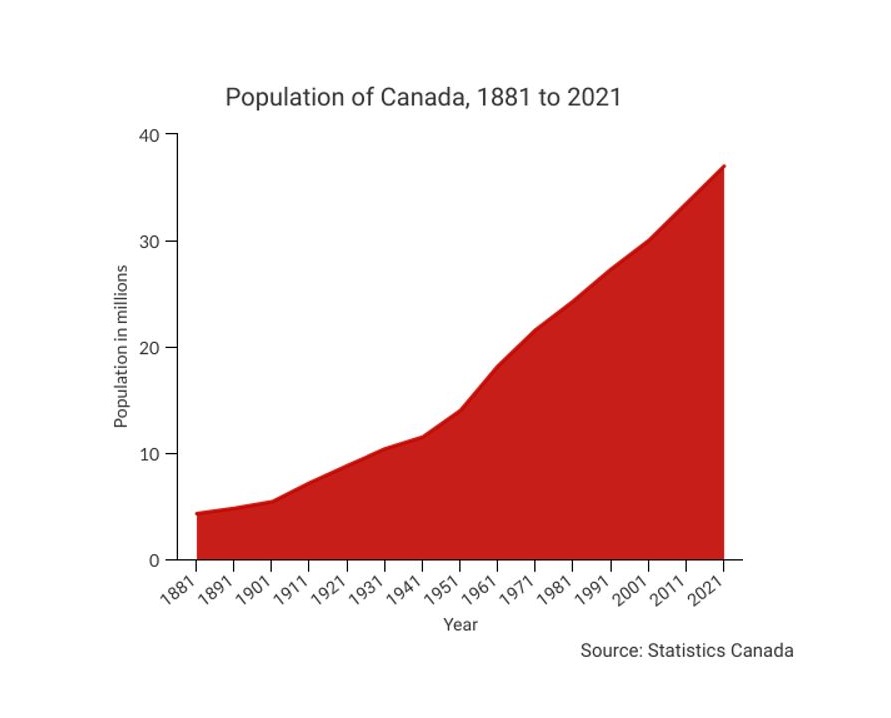Long term impact of emigration from Italy to the world
TORONTO – The population of Canada has increased more than tenfold since the unification (Confederation, 1867) of the colonies under British rule in North America, when it approximately 3,600,000 in total – barely bigger than Toronto and 50% the size of today’s GTA.
Immigration (and the resulting birth rates) was an important, if not pre-eminent, factor in that growth. Until relatively recently considered a demographic phenomenon, immigration has begun taking its rightful place as an economic policy.

Italy (population c. 27.3 million according to Statista in 1867) and Italians were a significant part of that socio-economic growth. Even today, according to the 2021 census, approximately 4.5% of the population still self-identifies as Italian in origin (the Diaspora), approximately 1.4 million residents.
The flip side of those numbers is that they represent a demographic phenomenon of people and their families who left Italy – for any number of reasons – to manufacture a future elsewhere.
Today, as reported by Francesco Veronesi (in Corriere Canadese Thursday’s edition: Sono quasi sei milioni gli italiani all’estero), in his coverage of the annual report by Migrantes, an Italian organization that tracks migration flows, about 5.8 million still retain an Italian passport, worldwide, circa 7.25% of the Diaspora.
On November 3, 2023, one of our periodic contributors, Goffredo Palmerini (in the pic below), had occasion to prepare and deliver a scholarly presentation to the Assemblea CRAM, (at which a former Mayor of Hamilton, Larry Di Ianni was also a participant) held in l’Aquila, Abbruzzo on the topic. One of the facts emerging from that presentation is the impressive number indicating that, during the above period, no less than 29 million Italians emigrated from what we have come to call the Belpaese. It is a story worth retelling.
Palmerini’s work on the topic is well worth reading. We have received permission to reprint it in a series of suitable divisions (ten in total) appropriate for consumption in a daily newspaper. We will also provide an English translation with each column so that second and third generation Italians can more comfortably digest the significance of the phenomenon.
Goffredo Palmerini should not be held responsible for either the fidelity of the translations and the divisions of each piece in the series. These modifications (edits) are being made to reflect the fluidity of the original.
This week, we mark the tenth anniversary of the re-launch of the Corriere Canadese. Our editorial board has prepared this “literary project” in celebration of that event. We thank Goffredo Palmerini for his gracious permission.





